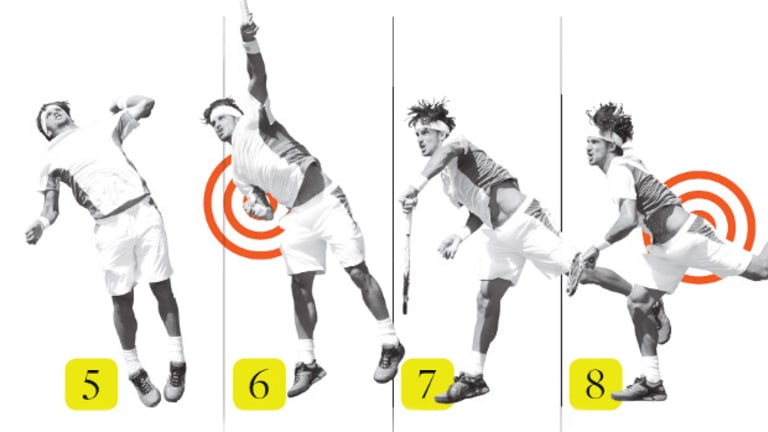1. Lopez extends both arms and keeps the ball at the throat of the racquet, holding it in his fingertips.
The beginning of your service motion should be slow, loose, and rhythmic. Lopez is calm and relaxed in his ready position. He leans back slightly, bending his left knee and putting his weight on his back foot.
2. His front knee is slightly bent as he starts to shift his weight forward.
As Lopez begins to toss the ball, his arms separate from each other. Notice that his head is already up and looking toward where his toss will peak. He drops the head of his racquet and left wrist downward. This keeps his wrist loose, almost limp, and will help with momentum later in the motion.
3. The head of Lopez's racquet remains down, but he has such remarkable racquet- head speed on his serve that it will soon catch up.
See how the ball is still in Lopez’s hand, even though his hand is above the height of his shoulder? A bad toss is one of the most common causes of a bad serve, and most tosses are bad because players release the ball too soon, flick their wrists, or both. Lopez lifts the ball to eye level before releasing it; there’s no wrist action. When you toss this way, the ball goes straight and doesn’t have to travel as far to the contact point.
4. His head is tilted back and pointing at the ball; so is his right hand.
Though many of today’s top players delay their racquet arms, the best servers eventually arrive at the traditional trophy position, as Lopez does here. His shoulders and hips remain closed to the court.
